Automation
ARCHIVE VERSION
Notes (Google Drive)
IMage Gallery
Software tools
Excel PID Drone Simulation (.xlsx)
NetLogo Simulations
Google Docs version (lame)
Resources
Automation
PLAYLIST
Exam - all but finished
Later Today
Motivation
See Also
Humans, Machines, Governance, and Automation
1
2
3
4
Unpacking
"Automation"
PID ControllERS
FEEDBACK
Main TAKEAWAY
Automatic machines can be controlled to do what humans want by minimizing error through feedback.
Terminology
machine
automatic
control
feedback
cybernetics
A machine is "(1): an instrument (such as a lever) designed to transmit or modify the application of power, force, or motion
(2): an assemblage of parts that transmit forces, motion, and energy one to another in a predetermined manner"
An automatic machine is one that, once turned on, operates without human intervention.
Regulation of a system to achieve desired performance.
control that does not have access to feedback.
control that does have access to feedback.
Evaluative information about a process that is available to a controller of that process
the science of automatic control systems in both machines and living things
closed loop
open loop
Humans, Machines, Governance, and Automation
1
Previous
humans



We are lazy and we like to control things.
See also

The Six Simple Machines
wheel
Pulley
inclined plane
LEVER
wedge
screw
See also: Lucas, Jim. 2018. "6 Simple Machines: Making Work Easier"
SMORE. "Work, energy, and simple machines"
MACHINE: an instrument designed to transmit or modify the application of power, force, or motion.
MACHINES:
-
transferring a force from one place to another,
-
changing the direction of a force,
-
increasing the magnitude of a force, or
-
increasing the distance or speed of a force.
Tools and Machines Bibliography
- Wikipedia, "Kenneth Oakley"
- Oakley, KP. 1964. Man the Tool-maker
- Lucas, Jim. 2018. "6 Simple Machines: Making Work Easier"
- SMORE. "Work, energy, and simple machines"
- Wikipedia. "Tool use by animals"
MACHINE:
an assemblage of parts
that transmit
forces, motion, and energy
to one another
in a predetermined manner.
αὐτόματον, automaton, "acting of one's own will." First used by Homer to describe an automatic door.
Automaton


Automaton clock in Gloucester, United Kingdom
Henri Maillardet automaton, London, c1810 - Franklin Institute
STOP+THINK:What's the "AUTOMAT" Part?
These things were "AUTOMATIC" in that humans supplied the energy or the power but the device could carry out the sequence of activities "on its own."
The Secret: built-in CONTROL
AKA GOVERNANCE
from Kubernetes (κυβερνήτης, Greek for "governor", "helmsman" or "captain" or "steerer"; becomes gubernet- in Latin)
Earliest usages were more social than technical: governance of society

GOVERNANCE
Cybernetics

Cybernetics : the study of the control of systems.
centrifugal governor


UNPACKING "Automation"
2
TWO KINDS OF Automation
Instruction Following
Goal Seeking
An automatic machine is one that, once turned on, operates without human intervention.
components of an automatic machine
Actuator: generates force
Mechanism: transmit and focus force
Sensor: detects states
Controller: Compares sensor output to
goal and adjusts actuator
Stop+Think: automatic kettle?

Actuator: ?
Mechanism: ?
Sensor: ?
Controller: ?
button
switch
heater
temperature
sensor
at 100c
throw switch
Automation as Following Instructions

Behind
the
scenes
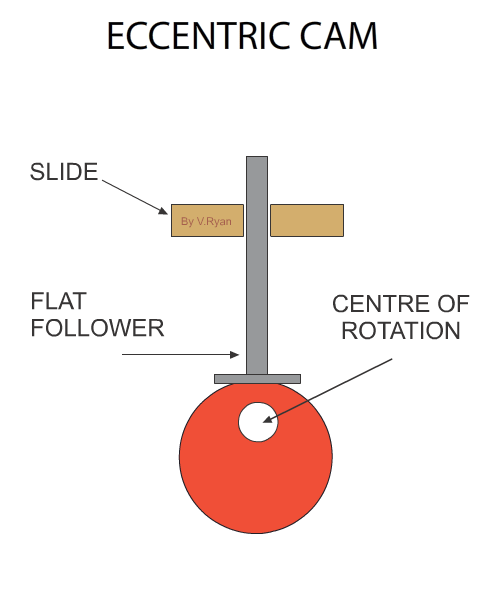
V. Ryan (no relation) aka
This produces an up and down motion of the grey part which is called the "follower."
V. Ryan (no relation) aka
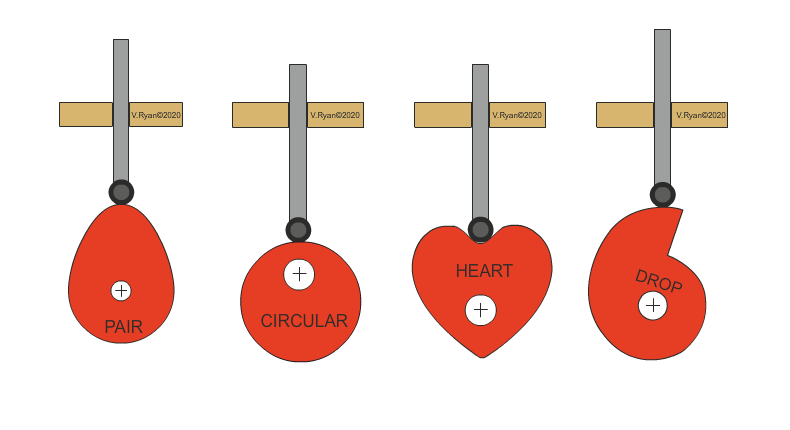
Differently shaped cams yield different patterns of motion

Wikipedia says the camshaft was first described in 1206 by Arab engineer Al-Jazari. He employed it as part of his automata, water-raising machines, and water clocks such as the castle clock.

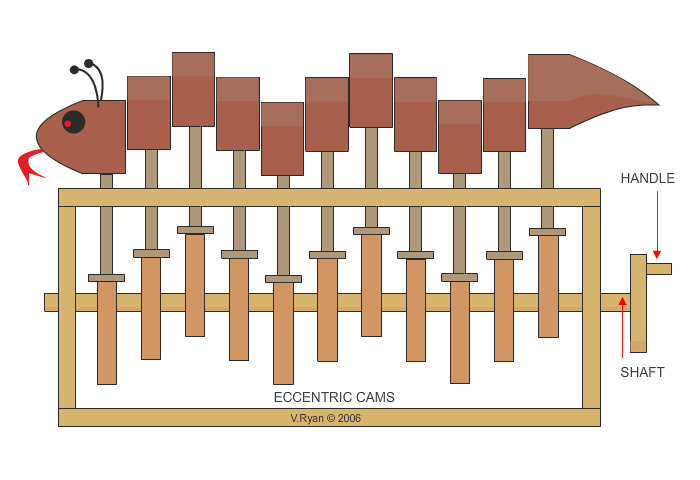
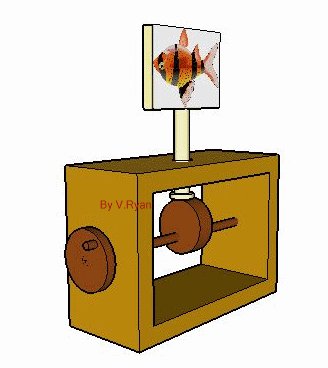

Jacquard Loom, see also
Automation as Sequence
Automation as Goal Seeking
CLOSE ENOUGH?
Automation as Goal Seeking
TOO FAST?
TOO SLOW?
SLOW DOWN
SPEED UP
GO
But where do these diamonds get the information they need to decide?


Centrifugal Governor
17th century
Credited to Christiaan Huygens,
adapted by James Watt 1788.
Concept: balls spin under steam pressure; faster pressure, faster spin; faster spin, pull arms down; arm motion opens pressure release; pressure decrease leads to speed decrease and valve closes

Centrifugal Governor
17th century
Credited to Christiaan Huygens,
adapted by James Watt 1788.
Concept: balls spin under steam pressure; faster pressure, faster spin; faster spin, pull arms down; arm motion opens pressure release; pressure decrease leads to speed decrease and valve closes
steam
steam
centrifugal governor

centrifugal governor
Automation as Goal Seeking
TOO FAST?
TOO SLOW?
SLOW DOWN
SPEED UP
GO
SENSORS!
FeedBACK
3
Title Text

How does a Stampede HAPPEN?
One horse runs. Others say "chill out, Max."
Two horses run. Others say, "Dudes, relax."
Three horses run. Nearby others say, "Hey, something happening?" And speed up a bit.
Others see change. Start hurrying
More horses perceive the change and pick up the pace...
What's the Relationship?

What's the Relationship?

What's the Relationship?

Reinforcing
Loop
What does the system look like over time?
What does the system look like over time?


How does a thermostat work?

Why does this happen?
How do Toilets work?
How Does This Work?

Why does this happen?
ANSWER:
FEEDBACK
(or Lack of Feedback!)
Feedback
Evaluative information about a process that is available to a controller of that process
a system paying attention to the effect it has on the world.
Feedback
When an output is also an input
Feedback
INPUT
OUTPUT
DEF 1: a group of interacting or interdependent things
System
System
something about A has an effect on B
something about B has an effect on A
System
something about A has an effect on B
something about B has an effect on A
the more B panics, the more A panics
the more A panics, the more B panics



Positive Causal Relationship: the more A, the more B OR
the less A the less B
Negative Causal Relationship: the more A, the less B OR
the less A the more B
GAP = actual - desired
more hot → higher actual
higher actual → bigger gap
bigger gap → less hotter
Causal Loop Diagrams
Each measurable cause/effect is represented by a word or phrase
Arrows point from causes to effects
Arrows are labeled + or - to indicate positive or negative (inverse) causal relationships.
population
births
deaths
See also
- Lannon, Colleen. "Causal Loop Construction: The Basics" @ The Systems Thinker
- DonnaGurule. 2018. "Systems Thinking: Causal Loop Diagrams" (16m40s)
- The Climate Leader. 2015. "Causal Diagrams" (8m34s)


-
+
+


-
+
+


-
+
+
We might start out too cold,
add warm, still be a bit cold,
TIME
GAP
TIME
GAP
We might start out too cold,
add more warm, getting close,
just a bit more warm, ahhh, just right.
Add warm, still be a bit cold,
add more warm, now we are a bit too warm,
turn back the warm a bit, ahhh, just right.
Types of System Behavior Behavior


Title Text

Why does THIS HAPPEN?
What ARE THE QUANTITIES?

What's the Relationship?

+
+
How does the System behave?

+
+
TIME
Horses Running
Compare these two systems

+
+
Horses Running
TIME
TIME
GAP
Two Kinds of Feedback
Positive or Reinforcing
NEGAtive or BALANCING

Reinforcing
Loop
This is a positive feedback loop. AKA a "reinforcing" (R) loop. R loops always have an even number of minus signs.

-
+
+
Balancing
Loop

Reinforcing
Loop
This is a positive feedback loop. AKA a "reinforcing" (R) loop. R loops always have an even number of minus signs.



-
+
+
Balancing
Loop
This is a negative feedback loop. AKA a "balancing" (B) loop. B loops always have an odd number of minus signs.


The more open the throttle,
the faster the machine.
The faster the machine,
the higher the rotational frequency.
The higher the rotational frequency,
the higher the angle.
The higher the angle,
the less open the throttle.
The less open the throttle,
the slower the machine.
Causal Loop Diagrams
Direction of Relationships
Valence of Relationships
"When A grows, B grows"
A
B
Linked Causes and Effects
"A influences B"
A
B
A
B
+
-
"When A grows, B shrinks"
Example: Hunger
Hungry
Eating
+
-
"The hungrier I am, the more I eat.
The more I eat, the less hungry I am."
Example: Work Habits
Things Go Well
Confidence
+
"When things go well, I get over confident and start to cut corners. Things start slipping and I get careful and then things go better."
Cut Corners
+
-
Biological Feedback
causal loop for insulin/glucagon

References
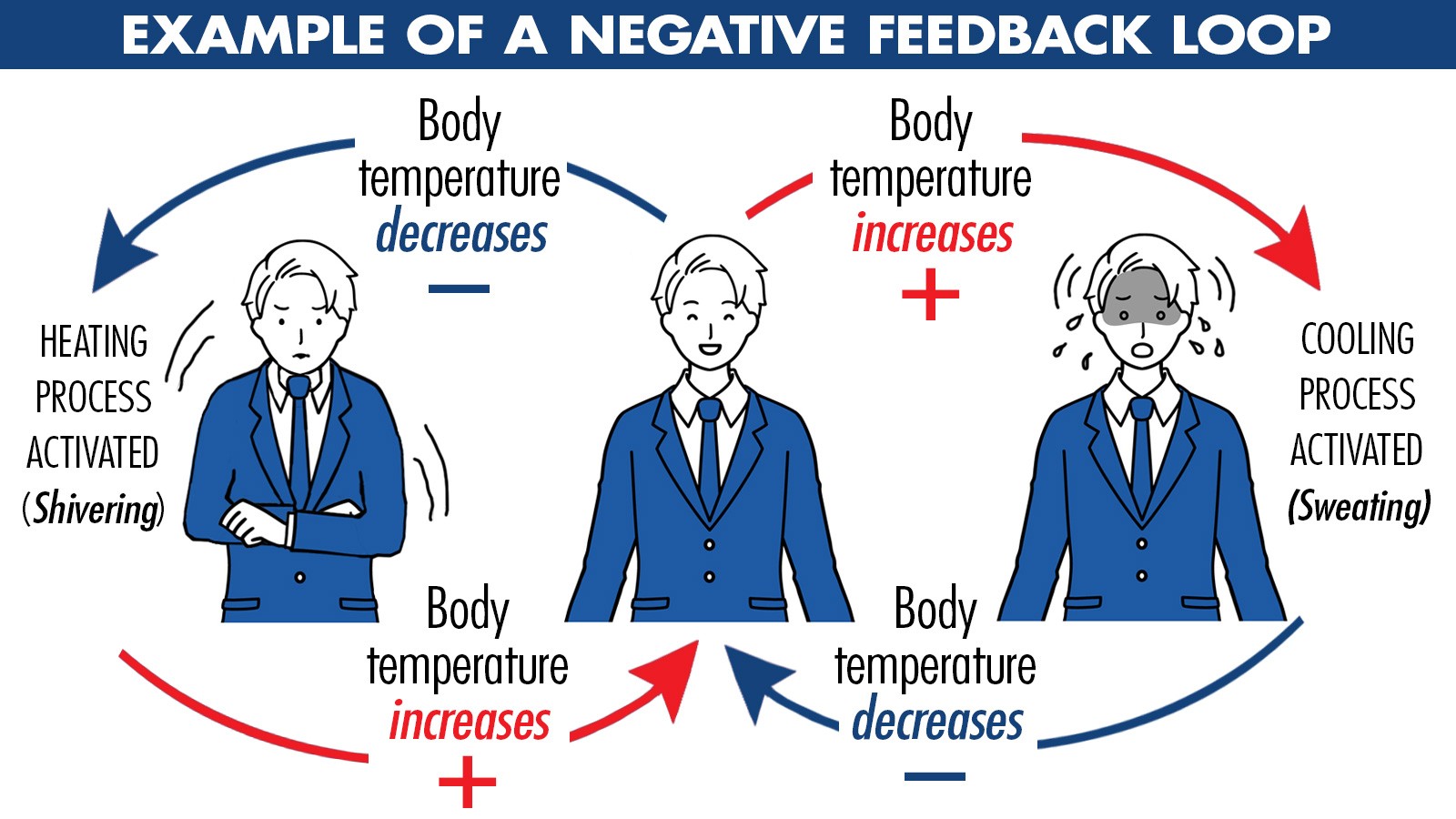
https://storage.googleapis.com/ltkcms.appspot.com/fs/yd/images/cover/negative-feedback-loop.base?v=1587496185
Positive Feedback
Amplifier
amplifies
sound from
microphone.
Sound comes
out of speaker
and goes into
microphone.
If amplifier affects higher
pitched sounds more then higher pitch amplification outpaces
lower pitches and we hear screeeeeeeeeeech.

https://www.joboneforhumanity.org/
What does the system look like over time?


R loops produce unconstrained growth in a system.
Two Kinds of Automation
How do these differ?

Open vs Closed
Loop Automation
In open-loop automation the control of the process is independent of the output.
In closed loop automation, the control of the process depends on feedback based on the output of the process.
Centrifugal Governor is an example of a
Closed Loop System




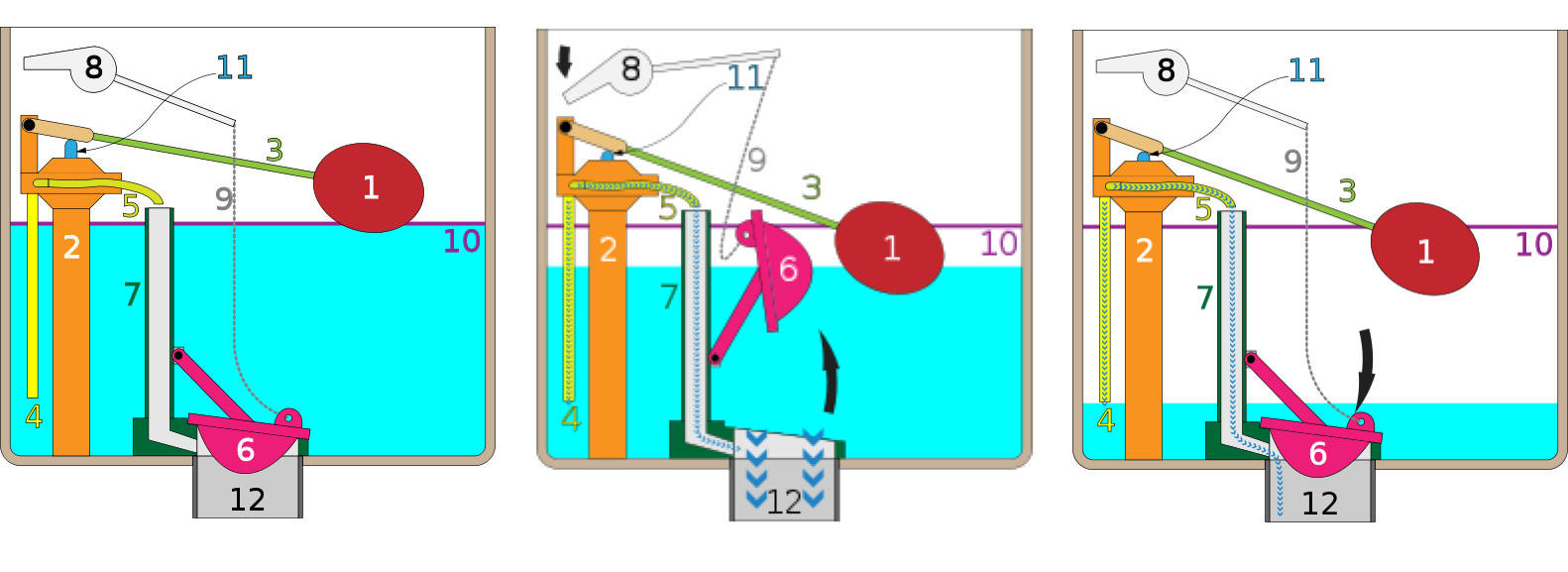
STOP+THINK: Open or Closed Loop?
Closed Loop Systems
Depend
on
Feedback
How do thermostats work?

thermo stat
temperature unchanging
How does it work?
Room Cold?
Turn Heat ON
Room warm?
Turn Heat OFF
How does a thermostat work?

SET TEMPERATURE
THERMOMETER
SWITCH
CAUSAL LOOP
SET TEMP
ACTUAL TEMP
GAP
SWITCH
HEAT
But HOW are these causally related?
CAUSAL LOOP
SET TEMP
ACTUAL TEMP
GAP
HEAT
+
-
+
HOW does the "system" behave?
balancing loop
This is a negative feedback loop. AKA a "balancing" (B) loop. B loops always have an odd number of minus signs.

TIME
TEMP
SET TEMP
ACTUAL TEMP
GAP
Furnace switches off but some heat continues to flow
Furnace ON
B loops produce systems that oscillate or settle down.
Feedback
and
System Behavior

PID CONTROL
4
Next
The Problem of Control
How to automate the process of achieving a set output goal

from "GAP" to "ERROR"
Nicolas
Minorsky
1885-1970

Expert helmspersons pay attention to what's going on, how things are changing, and where things have been so far.
I
N
S
I
G
H
T
Expert Control Takes Account of...
How far off the target am I at the moment?
Is my error increasing or decreasing?
How well or how badly have I been doing overall?
PRESENT
PAST
FUTURE
Three Ways to Think about Error
Proportion = what is the current error?
Derivative = how is error changing?
Integral = how much error has accumulated?
PAST
FUTURE
PRESENT

https://youtu.be/wkfEZmsQqiA

Tutorial
Automation INF1339F21
By Dan Ryan
Automation INF1339F21
- 907






